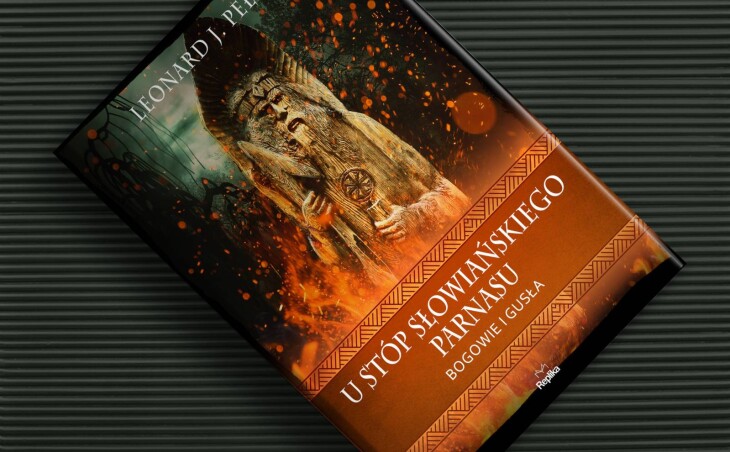The Replika publishing house consistently refreshes subsequent ethnographic items explaining our folklore, and above all, how little we know about it. At the foot of the Slavic Parnassus, it is a good place to start, but even better – as a supplement to Bohdan Baranowski’s books.
Our myth or not?
During the release of the second volume Brom Unka Odya said that reading in the circle of ghouls and werewolves and Phantom. The natural history of Łukasz Kozak leaves us with the impression that all other studies of universal Slavic mythologies are purely original creations (or maybe she even said more bluntly). First of all, the legends that have reached our times are very local, typical of individual villages. Second, too much and too long ago our ancestors were persuaded by fire and sword as part of Christianization. And this is what you can learn more from the book Pełka, At the foot of the Slavic parnasu .
I suspect that you also feel that the Slavic traditions are synonymous with “ours”. That since we have Marzanna melting, red charm ribbons, witches and Easter eggs, we will be able to understand the genealogy that connects them with Światowid, Mokosa, Arkona, and the ruins discovered on Rügen. Unfortunately, the more you read, the more clearly you understand that, first of all, we know little. Marzanna could be a great, good goddess. Mokosz … we do not know if she was universally venerated. We did have witches, but the witch-hunts and the nights of Walpurgis are German folklore, which infected all of Europe (check in Trials of witches in Poland in the 17th and 18th centuries). You can exchange it for a long time, only the applications given by grandma are certain – after all, she saved us from the evil eye and you grew up healthy! The strangest feeling evoked by reading Pełka or Baranowski’s books is often the feeling of complete alienation from “our” mythology.
Parnassus, i.e. the attendance list
Pełka analyzes historical texts that contain the oldest reports about the beliefs of the Slavs inhabiting the territory of today’s Poland, but also of eastern Germany, Belarus and Ukraine. Most often they tell about the conquest of a stronghold, and then looting and burning or destroying the temple standing in it. Less often they are the notes of a scholar who became fascinated with the quirks of the dark people encountered during (usually merchant) expeditions. In view of the origin of the sources, he immediately notes that they are not accurate or even favorable to Slavic mythology. He also reviews later writings, including the romantic ones, deeply fascinated by the Slavic language – but here we all realize that the further away from the original beliefs, the more mistakes and author’s comments
Pełka’s book is also an attempt to catalog the most important, or even well-known, Slavic deities. This turns out to be an overwhelming task – the lists of names mentioned in the sources are incomplete, give the impression of random juxtapositions, and do not agree with each other. This is another argument for the hypothesis of the local Slavic beliefs. After all, the unification of the tribes inhabiting here took place in parallel with the Christianization – and not only at the dawn of Polish history, this also applies to our neighbors. The author devotes a lot of space to the specific “cultural revolution” of the 10th and 11th centuries, showing how effectively earlier beliefs were erased, places of worship, statues and smaller objects related to the religions of the Slavs were destroyed.
Pełka writes not only about the beliefs, but also the customs and social organization of pagan Slavs. Based on similar sources, the conclusions are therefore uncertain, but show a fairly typical patriarchal society. Focused on rituals, especially those to protect children. He also devotes a lot of space to the cult of the dead, as evidenced by many material monuments, even if they are not large buildings, but only small vessels with offerings. When it comes to sacrifices, you will also find an overview of the hypothesis that living people were sometimes sacrificed to deities.
At the foot of the Slavic Parnassus is a sad book, because it tells about the cultural heritage that was taken from our ancestors, and in a sense also from us. In our case, the title holy mountains are empty, we can only find ruins there, some archaeological objects, also analyzed by Pełka. It looks completely different than the pantheon from the famous series of Slavic Idols by Zofia Stryjeńska – colorful, lively and full of power in the Young Polish style. The conclusion will be sad: we reinvent the gods, we only inherit superstitions or terrible stories that bind families, neighbors, but not Slavs.
Nasza ocena: 7.2/10
An attempt to catalog the Slavic deities leading to a sad reflection. In the face of meager sources and many layers of distortions or the ordinary deaf telephone of generations, it is impossible to say whether any god had followers in the entire Slavic area.EDITION AND PROOFREADING: 8/10
PLOT: 7/10
Characters: 7/10
STYLE: 7/10

